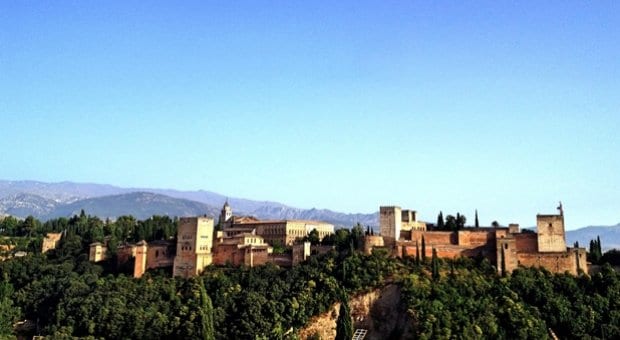
The Alhambra, a lushly landscaped 11th-century Alcazaba fortress. Credit: Aefa Mulholland
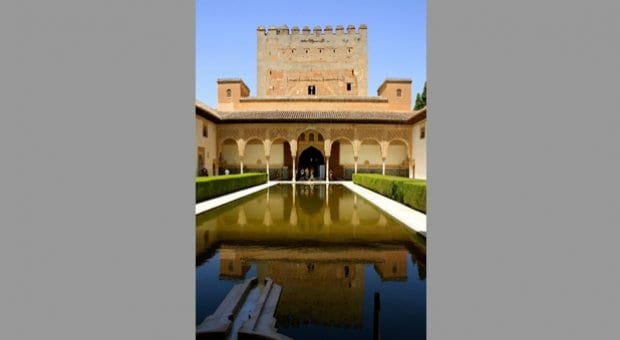
Nasrid Palace in the Alhambra. Credit: Aefa Mulholland

Granada is famed for its tapas. Credit: Aefa Mulholland
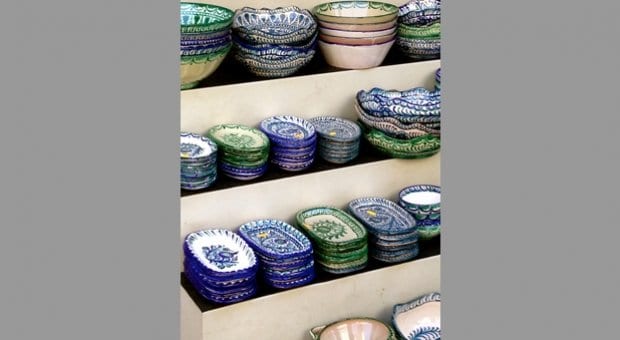
Colourful Andalusian ceramics. Credit: Aefa Mulholland
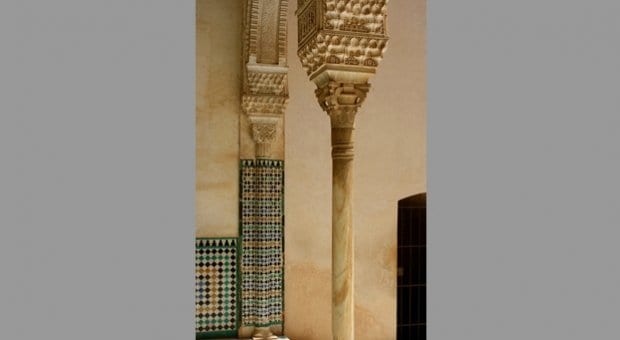
Detail of ornate tile and stone work in the Alhambra. Credit: Aefa Mulholland
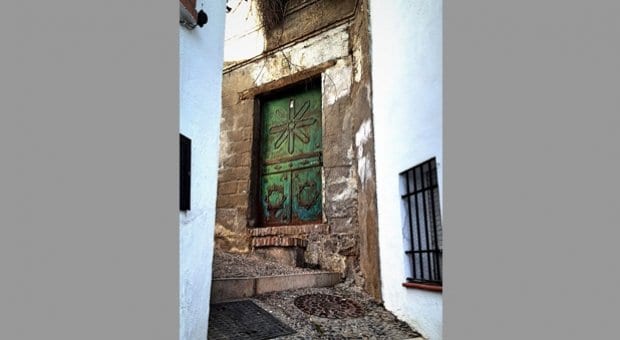
Steep street in the Albaicin area. Credit: Aefa Mulholland
Confettied with churches, monasteries, palaces and hidden Moorish gardens, Granada is Andalucia’s most visited city. Within minutes of arrival, you’ll understand why: the orange sunset glow on the incredible 13th-century hilltop palace fortress, the Alhambra; the captivating dishevelled medieval streets in the old medina, the Albaicín; the stunning backdrop of the snowy Sierra Nevada mountains, dotted with the whitewashed villages of the Alpujarras, olive trees braided along their lower slopes; the echo of flamenco drifting along impossibly narrow, twisting streets.
Spain’s beloved gay poet Federico García Lorca said of his hometown, “The hours are longer and sweeter here than in any other Spanish town.” American writer Washington Irving called it a “city of enchantment and fantasy” and wrote Tales of the Alhambra here. The Alhambra inspired Salman Rushdie, too, who described it as “that monument to a lost possibility that nevertheless has gone on standing, long after its conquerors have fallen; like a testament to lost but sweetest love . . .” Whichever way you look at it, it’s a romantic city.
Presiding over it all is the Alhambra. Lushly landscaped with oleander, cypress, myrtle and myriad water features and dating back to 1238, the UNESCO World Heritage Site includes four palaces (three 14th-century Moorish ones and the unfinished 1526 palace of Carlos V), the 11th-century Alcazaba fortress and the beautiful Generalife — summer palace and pleasure gardens of the Moorish sultans. This vast complex of sandy stone and intricate mosaic — the last outpost of Muslim Spain — is an unexpectedly green spot, courtesy of an early sultan’s decision to divert the river Darro eight kilometres from its course to his palace. Buy tickets in advance online or show up before 9am to be included in the daily allocation. Tickets sell out early in summer months.
The best views of the Alhambra are from the old Moorish casbah, the Albaicín, a warren of winding cobbled streets, some so steep that even a donkey would think twice about tackling them. Many streets are no more than uneven, undulating stairways; some have a few brave cars and even occasional small buses squeezing through. They’re filled with mysterious carmens (Moorish villas with hidden walled-in gardens), unexpected squares with orange trees, fountains and a scatter of patio tables; some sit on outlooks, miradors, with views out over the city, the Sierra Nevadas or the Alhambra. The best photographs of the palaces are from the lovely, but tourist-clogged, Plaza de San Nicolas. Adjacent to the Plaza, you’ll find the beautiful new mosque, the first built since the Moors were expelled. Pick your way back down to Calle Caldereria Nueva, known as the Calle de las Teterias, for all its Moorish tearooms.
Other venerable city sights include the millennium-old Arab baths, the ornate Gothic Capilla Real (the Royal Chapel, with its tomb of Ferdinand and Isabella), the 1516 Carthusian monastery, the 1492 Monastery of San Jerónimo and the hulking Renaissance cathedral. For a more modern take on Granada, head to central plaza Bib-Rambla for morning churros with chocolate on a patio; watch the city come to life slowly, swifts skyrocketing overhead, then saunter chic shopping street Zacatin.
Granada is famed for its tapas. Two with good free tapon offerings are El Minotauro, off Plaza Nueva and on the Carrera del Darro, and Bodega Mas Que Vinos, tucked off Calle Zacatin. For more substantial fare, hunt out the hidden Basque restaurant Mesón del Trillo in an old carmen in the Albaicín.
Bars
Granada’s streets fill after 8pm; the city is a night owl. Take a seat at a river terrace restaurant under the Alhambra or on Campo de Principe, hang with locals at hip, laid-back Bar Damasqueros, or, in the Albaicín, sample local wine at El Ventidos on Calle de las Teterias. To find queer and queer-friendly bars, head to the San Agustin market area. LGBT club La Sal, on Calle Santa Paula, is the best dance spot. Nearby, new-ish mixed Six Colours has drag shows and a restaurant. For flamenco, try Peña Flamenca la Platería. For grittier versions, explore the Camino de Sacromonte on the way to the edgy gitano cave barrio of Sacromonte. For a totally different night out, experience El Camboria in Sacromonte, a club housed in caves dug into the hillside, where things get going from 2am and you can watch the sun rise from the terrace.
Accommodation
Room Mate Leo is a funky hotel beside the cathedral, with a great roof terrace. The beautiful Alhambra Palace is just steps from the actual Alhambra and boasts incredible city views. Basic but charming, clean and very cheap, Pension Suecia is off Calle Molinos, on the shuttle bus route between the Albaicín and the Alhambra.
Granada is 2.5 hours from Seville. For the most up-to-date travel information on Gay Seville, see our City Guide, Listings Guide, Events Guide and Activities Guide.
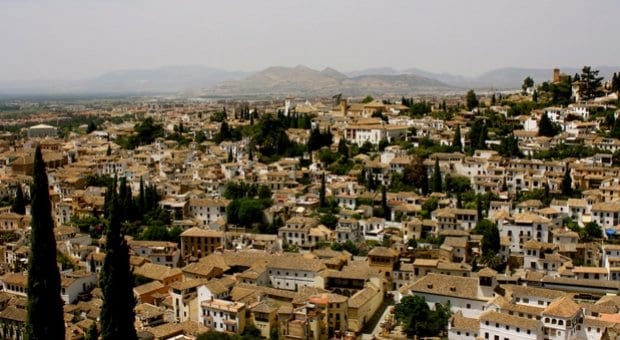
 Why you can trust Xtra
Why you can trust Xtra